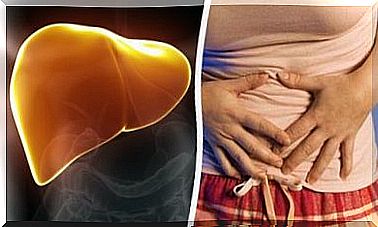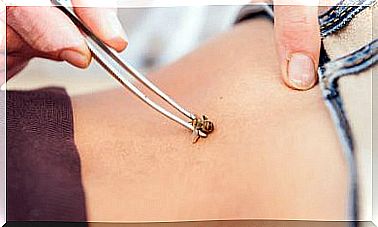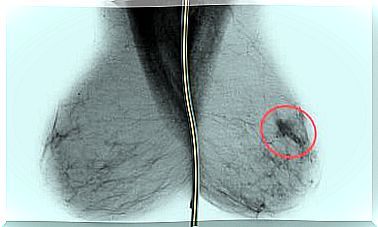Corticophobia Or Fear Of Corticosteroids
Corticophobia, or fear of corticosteroids, can be defined as a set of beliefs and attitudes of fear and rejection towards this type of medicine. This occurs most often when these substances are used in cream form to treat atopic dermatitis in children.
According to statistics, between 20 and 83% of patients with atopic dermatitis are afraid of corticosteroids. The range is very wide, but as can be seen, sometimes it reaches a majority segment of users.
The most striking thing is that there are also a good number of health professionals who are afraid of corticosteroids. The point is that these drugs, while causing side effects in specific cases, are also the best option for treating various conditions. Likewise, there is a lot of myth in corticophobia.
What are corticosteroids?
Humans secrete corticosteroids naturally, through the adrenal glands and from cholesterol molecules. In this way, our body generates two types of corticosteroids, also called corticosteroids.
All these natural substances fulfill an infinite number of functions, among which the metabolism of carbohydrates and proteins, as well as the regulation of the immune system and the response to stress, stand out.
The first type of these natural corticosteroids contains 21 carbon atoms. These, in turn, are divided into two groups. The first of them is that of glucocorticoids, among which is cortisol or hydrocortisone; and the second is that of mineralocorticoids, among which is aldosterone.
The second group of corticosteroids produced by the body are those with 19 carbon atoms. These include hormones such as andro and estrocorticoids.
Synthetic corticosteroids are drugs that simulate the action of natural corticosteroids. At the same time that they copy the action of these hormones, they also act with greater power than these. They are used to treat various conditions, such as dermatitis, rhinitis, asthma or psoriasis.

What are the most employed?
As we have seen, corticosteroids are drugs that help regulate the response of the immune system and reduce inflammatory processes.
The most widely used are prednisone, cortisone and hydrocortisone, and the truth is that, currently, they are used to treat many diseases. For example, in inflammatory diseases such as arthritis or asthma.
They are also used in autoimmune diseases, in which the immune system attacks our own tissues. One of these pathologies is lupus. Similarly, they are necessary in the treatment of adrenal gland insufficiency.
The truth is that, although they have become a fundamental pillar of current medicine, they are not without side effects.
Side effects of corticosteroids
Corticosteroids can be taken orally, through the skin, by injection, or even with intranasal sprays. The form of administration is chosen according to the pathology to be treated. In addition, each of them has a number of side effects.
Generally speaking, when used correctly, at the right dose and for a limited time, they very rarely have side effects. However, these can appear if the mentioned conditions are not met and their use exceeds the limits allowed by medical science.
Some of the side effects of corticosteroids are as follows:
- Weight gain : they cause fluid retention and alter lipid metabolism, which can lead to an abnormal distribution of fat in the body. However, this effect only occurs after prolonged use.
- Skin conditions: the skin can become thinner and more fragile; Stretch marks, telangiectasias, or dilated blood vessels may also appear; loss of skin color or hypopigmentation; hypertrichosis or the appearance of hair in inappropriate areas; and acnereporting lesions.
- Increase in the concentration of glucose in the blood: corticosteroids modify the metabolism of glucose and eventually cause rises in sugar.
Other possible side effects:
- Humor changes.
- Increased risk of certain infections.
- Increased risk of osteoporosis and fractures.
There are reports of increased blood pressure and increased risk of osteoporosis. The risk of contracting infections is also increased, they generate nervousness and mood swings and influence the development of cataracts.
Not all people who take corticosteroids experience these effects. It all depends on the dose, the time taken and the route of administration used. Most of the aforementioned effects appear only when taken orally. In this sense, it is necessary to understand that, most of the time, if they are prescribed, it is because their use will significantly improve the pathology suffered.
Fear of corticosteroids
All these possible side effects are what cause fear of corticosteroids. However, as already noted, when these drugs are used in the right doses and for a reasonable period of time, it is very rare that they cause such incidences.
In most cases, harmful effects appear only after prolonged use spanning several years. For this reason, the response to these risks cannot be an irrational fear, but a responsible use of these drugs, taking all precautions in each case.
Just as there are evident risks, a set of myths that are unfounded have also emerged. One of them points out that these drugs stop children’s brain development. There is no scientific data to corroborate this belief, but still many think it is true and feed their fear of corticosteroids.
Atopic dermatitis and fear of corticosteroids
The fear of corticosteroids is gaining strength with respect to certain pathologies. For example, today many parents refuse to use them to treat atopic dermatitis in their children.
Atopic dermatitis is a skin condition that mostly affects children. Causes ongoing redness and itchiness. To treat it, creams that contain corticosteroids are usually used. It is complicated that, if the treatment recommendations are followed, a problem arises.
Still, parents are increasingly reluctant to use them. There is a tendency to think that the side effects produced by corticosteroids when taken orally are the same as when using ointments.
This fear of corticosteroids is also fueled by a lack of trust in physicians. We must bear in mind that, if they are used properly and according to their prescriptions, they do not have to produce harmful effects. At least in the case of atopic dermatitis they are not frequent.

To keep in mind
Fear of corticosteroids arises, mainly, from ignorance and mistrust. However, we must bear in mind that doctors value both benefits and risks when prescribing a drug.
Therefore, we cannot let negative connotations invade us. While it is true that corticosteroids – especially when taken by mouth and for a long time – can have side effects, this is not the case in all cases.
It is important to make a prudent use of drugs, and the knowledge of their adverse effects to prevent them. The problem with the fear of corticosteroids is that it leads some to avoid these drugs at all costs, hindering or preventing the treatment of certain diseases.
Prudence is one thing and fear based on prejudice is quite another. It will always be prudent to consult a professional to remove doubts.









